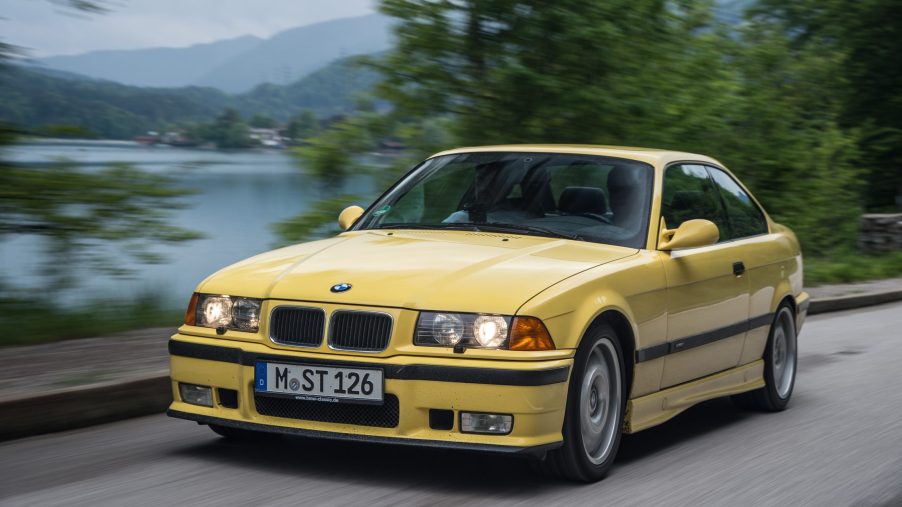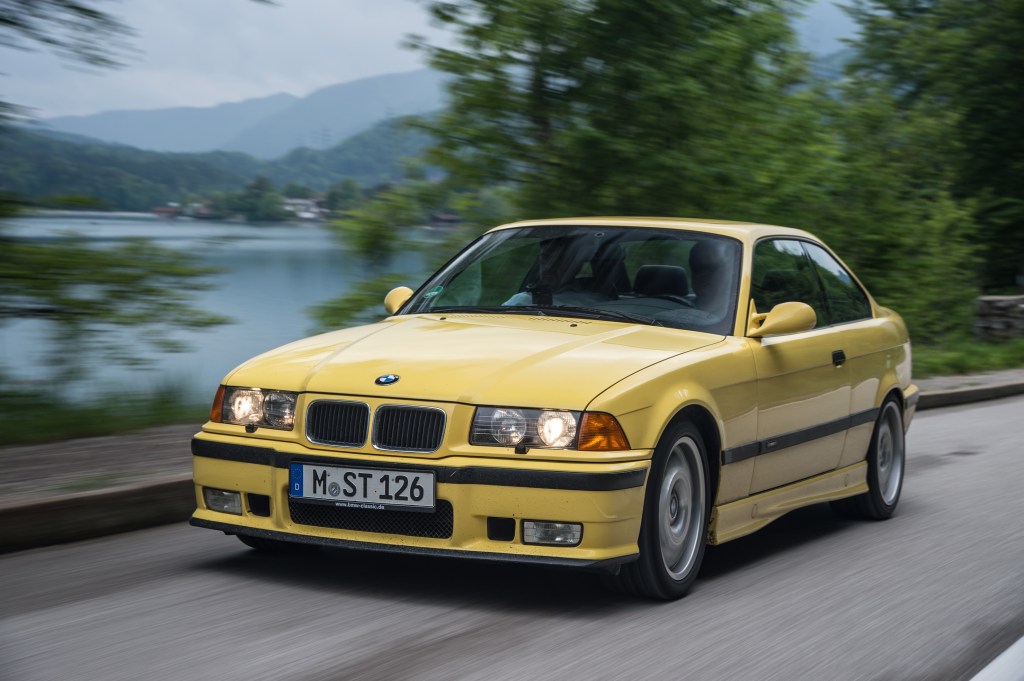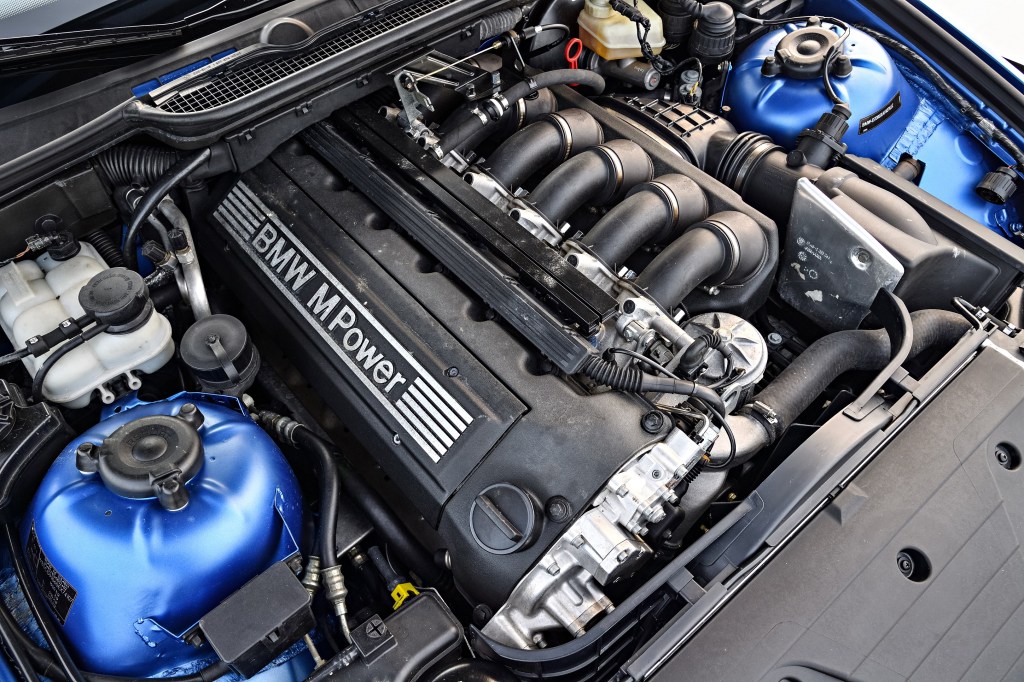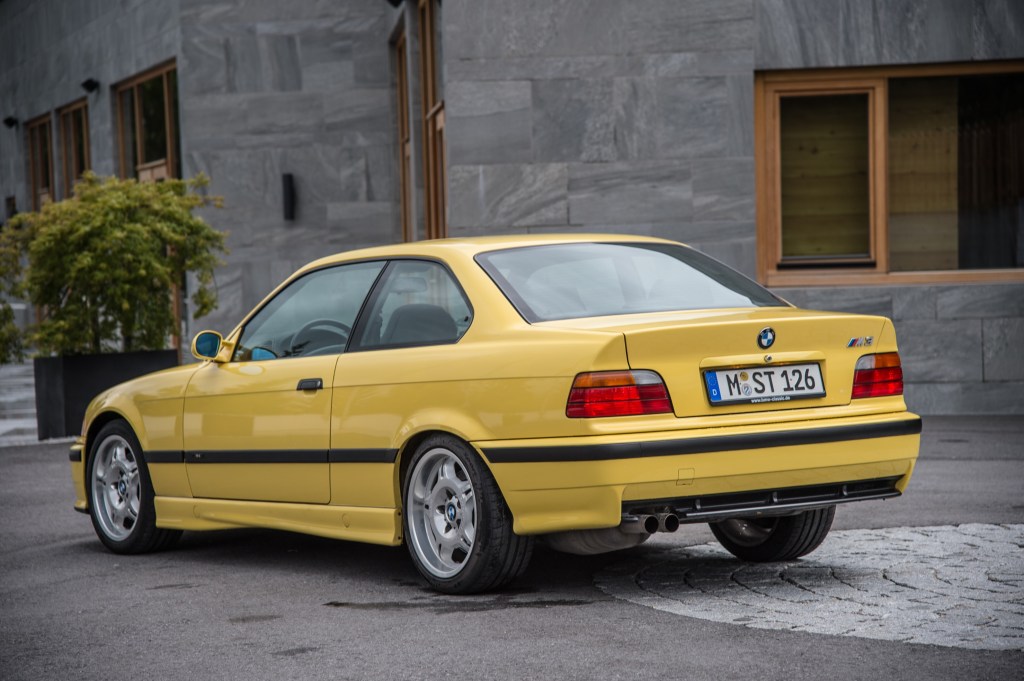
BMW E36 M3 Buyer’s Guide: Not Underappreciated Anymore
1995-1999 E36 BMW M3 article highlights:
- For many years, the second-gen E36 BMW M3 has been overlooked compared to first- and third-gen models
- Although it has some flaws, the E36 M3 combines the fun dynamics of its predecessor with some extra civility
- The second-gen BMW M3 used to be fairly cheap, but clean examples are now $25,000-$30,000 cars
Not every middle car child is as appreciated as, say, a Porsche 911 GTS. For evidence, look no further than the E36 BMW M3. Sandwiched between the iconic OG, the E30, and the beloved third-gen E46, the E36 has long lived in their shadows. However, in recent years enthusiasts have started coming around to the second-gen M3’s charms, which means prices for these near-classics are up. But before you start shopping for E36 M3s, you should know what you’re getting into.
More luxurious and less delicate than the E30, the E36 BMW M3 lacked some horsepower in the US

| 1995-1999 E36 BMW M3 | |
| Engines | 1995: 3.0-liter ‘S50B30US’ inline-six 1996-1999: 3.2-liter ‘S52B32US’ inline-six |
| Horsepower | 240 hp |
| Torque | 1995: 225 hp 1996-1999: 236 lb-ft |
| Transmissions | Five-speed manual Five-speed automatic |
| Curb weight | 3150 lbs (1997 manual) |
| 0-60 mph time | 5.6 seconds (1997 manual, Road & Track) |
Long-term disdain for the E36 BMW M3 comes from both sides of the Atlantic, but US enthusiasts had some extra reasons to gripe. At least 46 of them, to be precise. That’s the horsepower gap between the US-market E36 M3 and the European models, R&T explains. And that was the gap at first. By 1999, the Euro-spec M3 made 321 hp thanks to double VANOS and individual throttle bodies. These features, incidentally, didn’t make it here, either.
Yet it wasn’t just that US-spec E36 BMW M3s were hamstrung with lower horsepower figures. Although BMW released a few E36 Lightweights here, the homologation-special E36 M3 GT remained Europe-only. And to top it off, the US-spec car never got the six-speed manual or six-speed ‘SMG’ automated manual that European models did in late 1995. Though considering how problematic automated manual transmissions are, that’s arguably a blessing in disguise.
But even though European customers had more horsepower, they weren’t necessarily smitten with the E36 BMW M3, either. Compared to the E30, the second-gen M3’s interior felt cheaper and more plastic-heavy. And because BMW was starting to shift more in the luxury direction, the E36 M3 also has more equipment and buttons. As a result, it’s also heavier than the E30 and lacks some of its predecessor’s “elegant” delicateness, R&T says.
However, all that falls away once you start driving it.
If you want to understand why “enthusiasts love” the E36 M3, just “turn the…key,” Road & Track says
Firstly, even in US-spec, the E36 BMW M3 is faster than the E30. Secondly, its less-delicate nature is “central to its charm,” R&T notes. And just because it doesn’t feel dainty doesn’t mean the E36 can’t dance its way around corners.
The five-speed manual is notchier than the E30’s shifter, but it’s also more precise, R&T reports. You don’t have to rev the S50 or S52 out as you do the E30’s four-cylinder engine, either. Instead, you can revel in the E36 M3’s raspy exhaust note and smooth, low-end torque. And all of this comes before you even turn the wheel.
Speaking of, the E36 BMW M3 is just as unfussy and easy to guide as its predecessor, R&T gushes. The suspension and chassis are compliant enough to laugh at potholes but not so soft that they don’t offer smooth, precise, predictable handling. And thanks to the standard limited-slip differential, it’s easy to steer and rotate this M3 with the throttle. Also, because the E36 M3 has a “more athletic driving position” than the E30, it’s even easier to feel shifts in its center of gravity, R&T notes.
Furthermore, while the steering is heavier than in the E30, it offers just as much feedback and precision. But just like with the shifter, the extra heft communicates a sense of solidity and quality, R&T muses. So do the brakes, which, like the suspension, are upgraded over the standard E36 3 Series hardware. And while the leather covering the sport seats’ bolsters is a bit thin, the seat adjustments are a breeze to operate, even on a racetrack.
If you address a few problem areas, the E36 BMW M3 can be reliable

Although the E36 BMW M3 is still fun to drive, it’s also an older used car that’s verging into classic territory. As such, it has a few issues that buyers need to watch out for.
The good news about the US-spec S50 and S52 engines is that they don’t require regular valve adjustments. They also don’t have a double VANOS setup like the Euro-spec ones. But like many other BMW engines, they have some flaws.
For one, they have several plastic components in their cooling systems; the plastic-heavy water pump is a known failure point. So is the chain-driven oil pump’s sprocket, which is held on by one nut. Fortunately, modern metal pumps last longer, and the nut is easily secured with some thread-locker. And for ultimate peace of mind, consider overhauling the radiator, expansion tank, hoses, and thermostat, BMW Tuning suggests.
In addition, while the US-spec E36 M3 VANOS system is simpler, it’s still a wear item. That means you’ll eventually need to replace its piston seals. But even if you do, it’s known to rattle at very low RPMs, FCP Euro reports. Luckily, modern seals last longer, and there are anti-rattle kits available. Also, the E36 M3 consumes some oil as part of regular operation. But if you’re noticing severe consumption even after switching to a thicker viscosity, check the PCV system and piston rings. Check the steering system for leaks, too.
However, overall the S50 and S52 tend to be solid, durable engines, BMW Tuning says. But if all this sounds like too much of a hassle, you could always swap in an E46’s S54 engine. That also gives you a modern OBDII system, MotorTrend notes.
The engine isn’t the only potential problem spot
Some E36 BMW M3 problems come from outside the engine bay, though. Its various suspension and drivetrain gaskets fail with age, including the rubber flex disc in the driveshaft, R&T reports. This isn’t an E36-only problem, but it’s worth keeping an eye out for.
What is an E36 M3-specific flaw, though, are weak rear shock tower mounts. They’re made of thin metal and are prone to cracking. There is a fix, but it requires welding in reinforcements. So, either budget for the repair or check that it’s been done.
Finally, older E36 BMW M3s can develop some interior faults. Door panels and headliners can de-laminate, for example, and gauge clusters can develop dead pixels, MT says. The 1996-1999 models’ digital climate control panel can fail, too. And check for water in the footwells, which could point to clogged drain cavities and potentially a water-logged ECU. Also, because convertible M3s’ roof mechanisms often fail with time, you’re better off seeking out a coupe or sedan, R&T notes.
Long unloved, the E6 M3 is now becoming an expensive classic

Once upon a time, you could buy a decent-condition E36 BMW M3 for $5K-$10K, R&T says. That’s no longer the case.
Today, a good-condition manual E36 M3 typically costs $25K-$30K, Hagerty reports. Excellent-condition examples are easily worth double that. And the 1995-only Lightweight models are often the priciest US-spec E36s.
On the plus side, at least the second-gen M3 is finally getting some appreciation.
Follow more updates from MotorBiscuit on our Facebook page.


